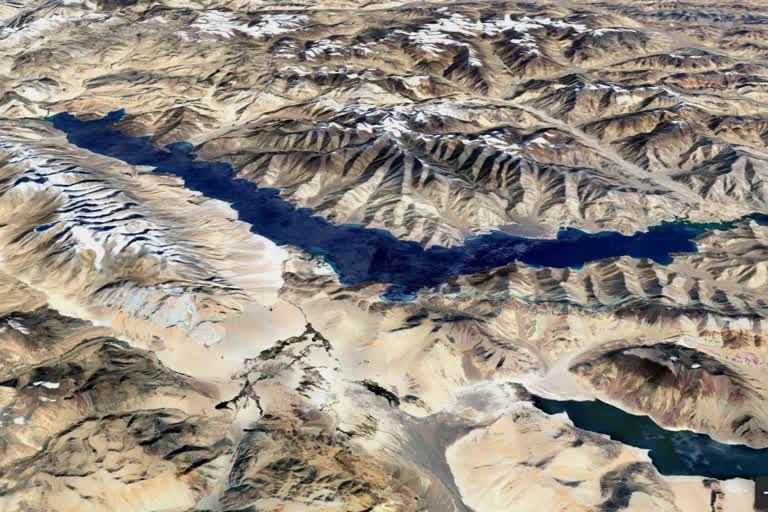New Delhi: The four-month-long saga of confrontation of Indian and Chinese military along the Line of Actual Control (LAC) from eastern Ladakh to Arunachal Pradesh is escalating into a crescendo - the latest development being a Saturday night confrontation between the forces of the two Asian giants on the southern shores of the Pangong Tso.
The dominant feeling in military circles is that the differences between the two countries have come to an irreconcilable state. And with the LAC being a matter of perception, control of dominating heights in the craggy and mountainous region can be a big force multiplier especially if the faceoff between the two armies is prolonged. And that, according to sources, is what led to the latest confrontation.
On the happenings of the intervening night of Saturday-Sunday, both sides have their own versions of the incident that took place at a dominating position on the peaks that flank the southern bank of Pangong Tso.
On Monday morning, an official release issued by Indian Army spokesperson Colonel Aman Anand said: "PLA troops violated the previous consensus arrived at during military and diplomatic engagements during the ongoing standoff in Eastern Ladakh and carried out provocative military movements to change the status quo. Indian troops pre-empted this PLA activity on the Southern Bank of Pangong Tso Lake, undertook measures to strengthen our positions and thwart Chinese intentions to unilaterally change facts on ground."
A few hours later, the PLA's western theater command's spokesperson Colonel Zhang Shuili made a statement stating that the Indian army "illegally crossed the line and took control, blatantly provoking and causing tension on the border."
Read: Army kept India's sovereignty secure; why is Congress crying: BJP
Adding that the move has "seriously violated China's territorial sovereignty, severely undermined the peace and stability of the Sino-Indian border area," the spokesperson made a request to the Indian side "to immediately withdraw its illegally crossing troops, strictly control and restrain the front-line troops, earnestly abide by its commitments, and avoid further escalation of the situation."
Part of the problem is the fact that the LAC itself is a matter of perception. Both India and China have differing versions of where the LAC is across many stretches in eastern Ladakh.
While details are not yet available on the incident with the Indian army military maintaining a stoic silence, this was the first encounter after the deadly June 15 clash at Galwan Valley where many soldiers lost their lives.
Unconfirmed reports spoke of casualties and captives as a result of the Saturday confrontation.
Read: China's nightly raid in south Pangong is a first, openly violates rules of engagement
With all established mechanisms - from military to diplomatic to bureaucratic - set up to resolve border rows failing to yield a solution, both countries had began mobilization on a major scale with an eye on the brutal Himalayan winter which besides extracting a huge economic cost will also be a big test for logistics preparation.
At the moment, about 100,000 troops from both sides have been mobilized along the LAC and in depth areas along with heavy military equipment besides the deployment of air assets.



